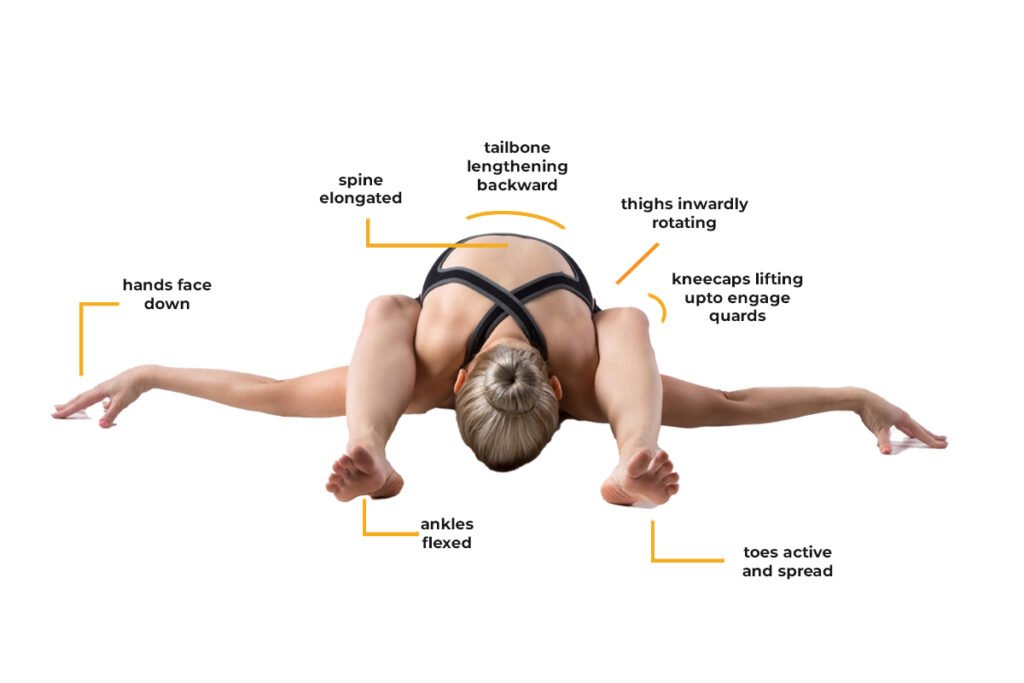
Yoga is a practice that blends physical postures, mental discipline, and breath control. One such advanced posture that holds significant benefits for both mind and body is the Kurmasana, also known as the Turtle Yoga Pose. This pose mimics the shape of a turtle, drawing from its symbolism of withdrawal, calmness, and introspection.
In this article, we will explore everything you need to know about Kurmasana—from how to perform it safely, its many benefits, and tips for beginners, to some interesting variations that can deepen your practice. If you’re ready to experience this transformative posture, let’s dive right in!
What is Kurmasana (Turtle Yoga Pose)?
Kurmasana is derived from the Sanskrit words “kurma,” meaning turtle, and “asana,” meaning pose. In this pose, the body adopts a turtle-like form, with limbs drawing inward and the torso folding forward over the legs. Just like a turtle withdrawing into its shell, Kurmasana helps yogis turn their attention inward, fostering a deep state of relaxation and meditation.
While this posture might look simple, it requires a combination of flexibility, balance, and control, making it an intermediate to advanced level pose. For beginners, it may require some preparatory poses and modifications.
How to Perform Kurmasana (Turtle Yoga Pose)
Though challenging, Kurmasana is worth the effort. Here’s a step-by-step guide to help you get into the pose safely and effectively:
1. Start in Dandasana (Staff Pose): Sit on the floor with your legs stretched straight in front of you, and your spine tall.
2. Widen the Legs: Open your legs wide apart, but not to the point of discomfort. A moderate distance should suffice to allow flexibility.
3. Fold Forward: Slowly bend at your hips and bring your torso down towards the floor. Allow your back to round slightly, and keep your chest broad.
4. Slide Your Arms Under Your Legs: Once you’ve folded forward, slide your arms under your thighs, reaching your palms out to the sides or behind your back. Keep your palms facing down.
5. Relax and Hold: Let your head and neck relax, resting on the floor if possible. Stay in the pose for 30 seconds to a minute, focusing on slow, deep breathing.
6. Release: Gently release your arms from underneath your legs and slowly sit back up.
Benefits of Kurmasana (Turtle Yoga Pose)
Performing kurmasana yoga pose provides a range of physical and mental benefits, contributing to overall well-being. Below are some of the key advantages of this turtle-like posture:
Increases Flexibility
Kurmasana is a deep forward bend that stretches the hips, hamstrings, and back. With regular practice, it can significantly improve the flexibility of these muscles. This makes it an excellent pose for anyone looking to increase their range of motion and relieve stiffness.
Calms the Mind
Just like a turtle retreats into its shell, Kurmasana encourages introspection and quietness. The pose promotes a meditative state by focusing the mind on the breath and body. This, in turn, helps to reduce stress and anxiety, making it an effective tool for mental relaxation.
Enhances Circulation
As you fold forward in Kurmasana, blood flow to the brain is enhanced, stimulating mental clarity and focus. This boost in circulation also helps to oxygenate your body more effectively, providing a rejuvenating effect.
Relieves Tension in the Spine
For those with tightness or discomfort in their lower back, Kurmasana can help release tension. By stretching and lengthening the spine, this pose alleviates compression and promotes spinal health.
Strengthens Core Muscles
While Kurmasana may appear to be all about flexibility, it also engages and strengthens your core muscles. The act of folding forward and supporting your body weight requires strength in the abdominal muscles, making it a great core workout.
Preparatory Poses for Kurmasana (Turtle Yoga Pose)
Because Kurmasana is an advanced pose, it’s important to prepare your body with certain beginner-friendly postures. These poses will help increase your flexibility and mobility, ensuring that you’re ready to attempt the Turtle Yoga Pose safely:
– Paschimottanasana (Seated Forward Bend): This pose helps in stretching the hamstrings and back, making it an excellent preparatory posture for Kurmasana.
– Upavistha Konasana (Wide-Angle Seated Forward Bend): This pose stretches the inner thighs, groin, and hamstrings, which is crucial for achieving the wide-leg positioning in Kurmasana.
– Supta Kurmasana (Sleeping Turtle Pose): A deeper version of Kurmasana, this pose offers a way to further challenge your flexibility and core strength.
Common Mistakes to Avoid in Kurmasana
While practicing Kurmasana, it’s easy to make a few mistakes that could either lessen the effectiveness of the pose or lead to injury. Here are some of the most common errors and how to avoid them:
1. Rounding the Back Excessively: While a slight rounding of the back is natural, excessive rounding can strain your spine. Instead, focus on lengthening the spine and keeping your chest broad.
2. Forcing the Fold: Don’t push your body into the pose. Kurmasana is a deep stretch that requires time and patience. If you force the fold, you risk injuring your hamstrings or lower back.
3. Neglecting the Breath: It’s easy to forget about the breath when focusing on the physical aspect of the pose. However, maintaining deep, steady breaths is essential for relaxation and deeper stretches.
Variations of Kurmasana
Once you’ve mastered the basic Turtle Yoga Pose, you can explore variations to deepen your practice or to modify the pose according to your flexibility level:
– Supta Kurmasana (Sleeping Turtle Pose): This is a more advanced version where the body folds even deeper, and the arms are brought further behind the back, creating an even greater stretch.
– Ardha Kurmasana (Half Turtle Pose): For beginners or those with limited flexibility, this variation allows for a gentler forward fold while still providing a deep stretch.
– Bound Turtle Pose: This variation involves clasping the hands behind your back for a deeper shoulder and chest opening.
The Ultimate Guide to Hellstar Tracksuits
Who Should Avoid Kurmasana?
While Kurmasana offers numerous benefits, it’s important to note that not everyone should attempt this pose, especially without proper preparation or guidance. Those with the following conditions should avoid Kurmasana or consult a yoga instructor:
– Lower back issues or injuries
– Severe tightness in the hips or hamstrings
– Recent surgery on the spine or lower body
– Pregnancy
Conclusion
Kurmasana (Turtle Yoga Pose) is an advanced yoga posture that embodies the tranquility and introspection of a turtle withdrawing into its shell. This deep forward bend offers incredible benefits for the body and mind, from increasing flexibility and circulation to promoting mental calmness.
Though challenging, the pose is a rewarding addition to any yogi’s practice. By preparing with gentler forward bends and focusing on proper alignment, you can gradually work your way into Kurmasana safely and effectively. Whether you’re looking to enhance flexibility or achieve a deeper meditative state, this turtle-like posture is sure to enrich your yoga journey.
Kurmasana Yoga Pose: A Deep Dive into the Turtle Yoga Pose
FAQs
Q: Is Kurmasana suitable for beginners?
A: Kurmasana is an intermediate to advanced pose. Beginners can try preparatory poses like Paschimottanasana and Upavistha Konasana before attempting the full pose.
Q: Can Kurmasana help with back pain?
A: Yes, Kurmasana can relieve tension in the spine, but it should be performed with caution, especially if you have existing back issues.
Q: How long should I hold Kurmasana?
A: Start with holding the pose for 30 seconds to a minute, gradually increasing the duration as your flexibility improves.






